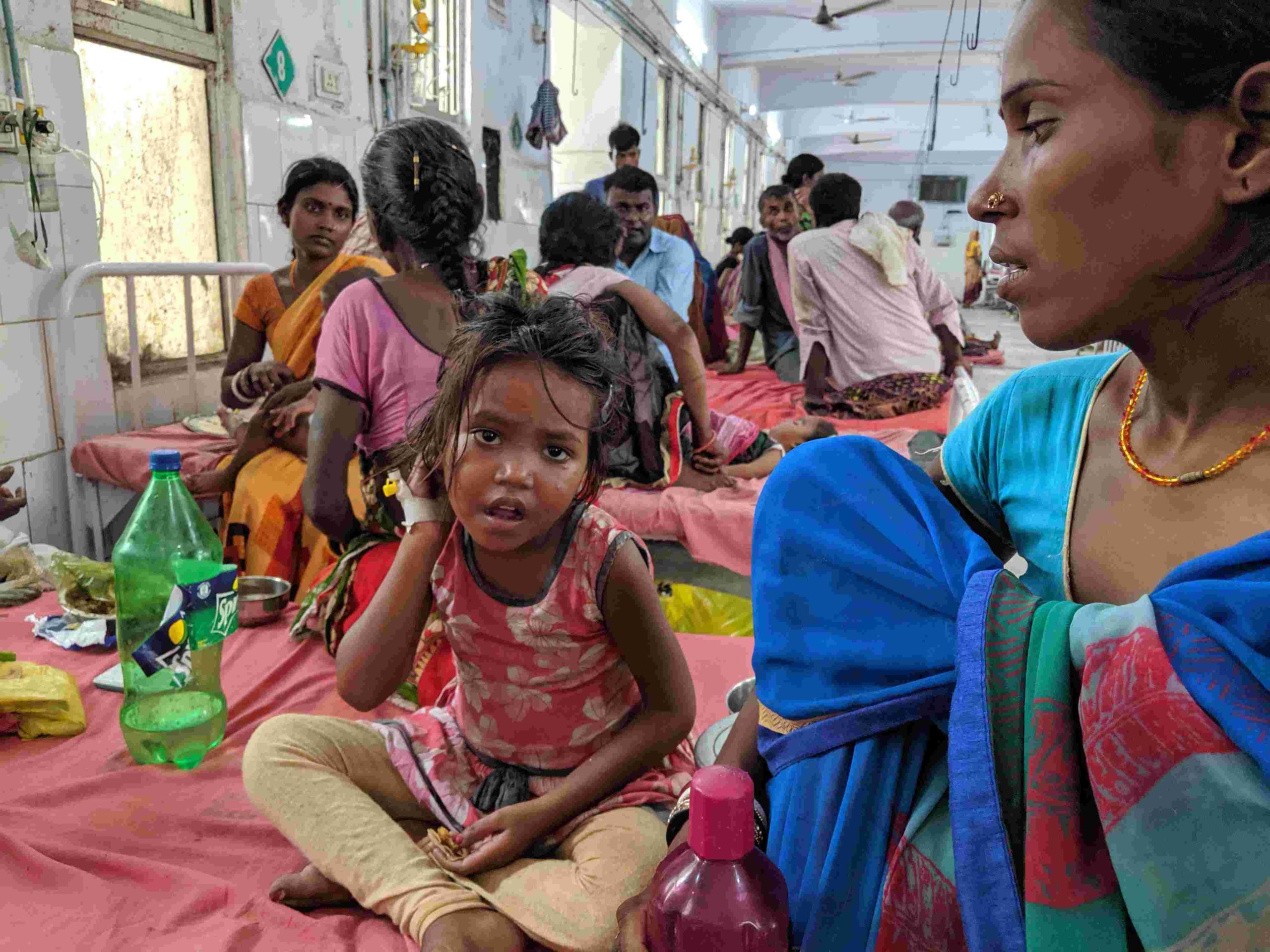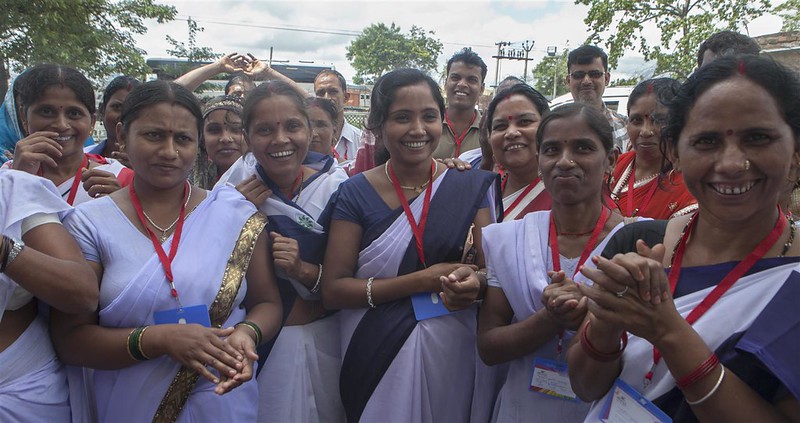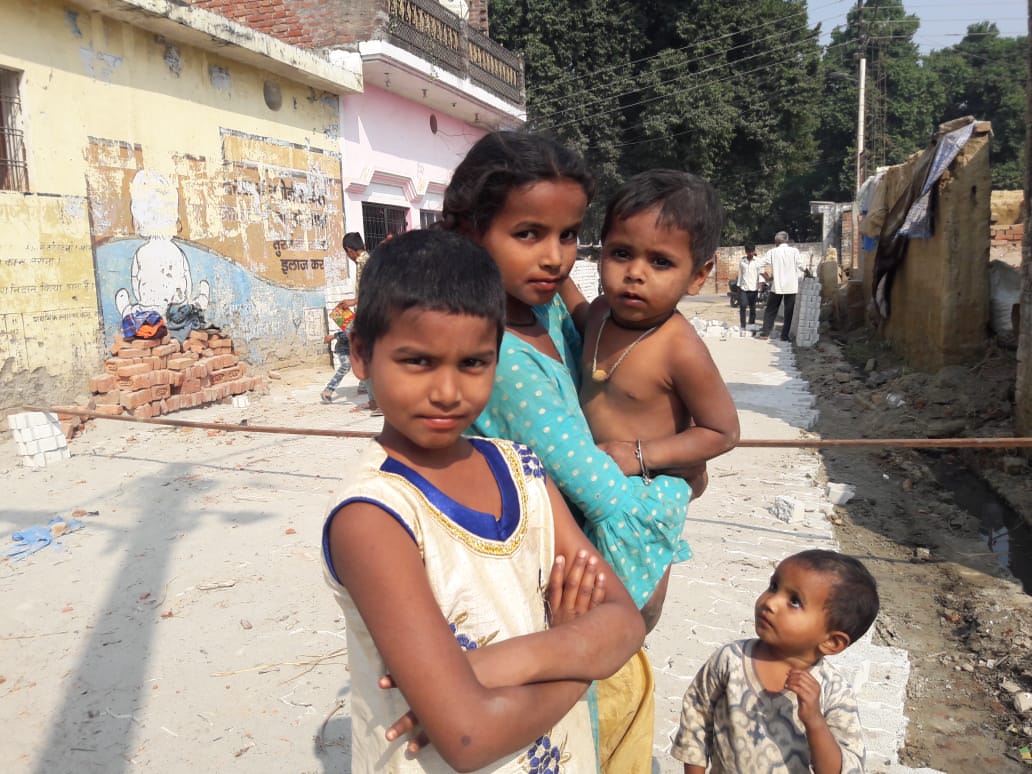Sustained awareness campaign by ASHA workers ensure low chamki fever deaths this year
Last year, at least 162 children died in Bihar due to an outbreak of acute encephalitis syndrome, commonly known as chamki fever. However, this year, the reported cases and deaths are much lower


Last year, 162 children died in Bihar due to chamki fever
Exactly a year ago, there was chaos in Srikrishna Medical College and Hospital in Muzaffarpur district of Bihar. Doctors were grappling with patient load of young children suffering from acute encephalitis syndrome, commonly known as chamki fever; while cries of parents who lost their little ones could be heard in the hospital corridors. There were cases where parents lost more than one kid to this dreaded disease within a matter of one or two days. Gaon Connection reported on this public health crisis from the ground.
As per official data, 162 kids died in Bihar due to chamki fever last year. Another 63 fatalities were reported from Assam, Jharkhand, Maharashtra, Manipur, Odisha, Uttar Pradesh and West Bengal.
Acute encephalitis syndrome, or chamki bukhaar, is defined as the acute-onset of fever with change in mental status (including symptoms such as confusion, disorientation, coma, or inability to talk) and often with new onset of seizures. Cases of acute encephalitis syndrome are reported throughout the year, but there is an increase in these cases in June, which peak during July and August, and then decline in September-October. India’s fatality rate in acute encephalitis syndrome is 6 per cent, but in the case of children it is as high as 25 per cent.
Unlike last year, this year acute encephalitis syndrome is under control in Bihar. According to the Bihar Health Department, between January 1 and June 22 this year, 92 cases of chamki fever were reported in the state. Of these, 11 children lost their lives. The mortality rate of the disease is much lower this year. As compared to last year when of the total patients affected, 21.73 per cent (130 patients) lost their lives; this year, only 11.95 per cent (11 patients) died due to acute encephalitis syndrome.
There are various reasons to the low death toll this year and most important is the sustained awareness campaign by the frontline women health workers — ASHA (accredited social health activist).
Awareness campaign
Last June four-year-old Anusha Kumari from Patahi village in Musahari block of Muzaffarpur district was diagnosed with the chamki fever. She was admitted to the Srikrishna Medical College and Hospital, got better and went back home in a few days.
However, in March this year, she was again approached by the ASHA to ensure about her overall well-being. “In March, ASHA visited our village and asked us to give our children solution of salt, sugar and water. She had also advised us not to let our children sleep hungry at night,” Prashant Paswan, father of Anusha told Gaon Connection. “Since then, I have been regularly giving my children solution of salt-water-sugar and ensure they eat before sleeping in the night. We are also more attentive because of the last year’s chamki fever outbreak,” he added. Apart from Anusha, he has three more young kids.
The lockdown has made it difficult for Prashant, a painter by profession, to feed his kids, as he has had no work in the last three months. His wife suffers from hepatitis B. “We received free ration from the government only once. I had to borrow Rs 30,000 for the treatment of my wife. I am using that money to run the household and have already spent Rs 18,000 on food,” he said.

Meanwhile, ASHA workers have left no stone unturned in this fight against chamki fever. Sohagwati Devi from Mustafapur village in Kanti block of Muzaffarpur told Gaon Connection that ASHA workers had visited her village and informed them about the symptoms and precautions for chamki fever. She said, “During March and April months this year, ASHA workers came and advised us to give salt, sugar and water solution to our children. We have been doing the same regularly,” said Sohagwati.
Arun Ram of Ali Neura village of Musahari block in Muzaffarpur had two daughters. One of them died last year due to chamki fever. “We have been following all the advice of the ASHA worker regarding our daughter and do not let her go out. And because of the lockdown we are also home only,” he said.
In 2015, the Bihar health department, in collaboration with UNICEF, prepared a standard operating procedure (SOP) for handling acute encephalitis syndrome. It includes awareness campaigns, distributing ORS to people, identification of symptoms, etc.
“In March this year, the health department advised us to visit the villages and spread awareness about chamki fever. Earlier, reports were not prepared regarding awareness campaigns. But this year, it was made mandatory to prepare the report,” Anita Devi, an ASHA worker in Muzaffarpur told Gaon Connection.
“The department also gave us a warning and told us an action would be taken against us if we fail to run the awareness campaign properly and high deaths due to chamki fever are reported,” said another ASHA worker on the condition of anonymity.
Explaining the awareness campaign, M P Sharma, senior officer, Bihar Health Department told Gaon Connection: “We launched an awareness campaign on chamki fever well in advance this year. Our department also imparted training to 445 MBBS doctors, 749 Ayush practitioners and 604 health workers on the acute encephalitis syndrome.” We also identified 12 chamki fever affected districts and did gap assessment of the health centres of those districts twice, he added.

Favourable weather conditions
Apart from the hard work put in by the ASHA workers, favourable weather conditions has also ensured chamki fever is under control this year.
Experts point out acute encephalitis syndrome is closely related to malnutrition and severe heat. Malnourished children have low glucose levels and if they stay out in heat and do not eat food, the glucose levels start decreasing, and they become the victims of hypoglycemia.
Due to heat and excessive moisture, metabolic activity in the body intensifies and craves glucose. Children with empty stomach have lower glucose levels. Increased metabolic activity due to heat and humidity leads to further depletion of glucose levels, causing hypoglycemia.
Arun Shah, a senior doctor from Muzaffarpur, who has extensively researched on this disease told Gaon Connection: “The outbreak of chamki fever is mainly observed in May and June as the weather remains warm and humid during this time. This year, the weather has been favourable and awareness campaigns on the part of the government were also carried out properly.”
Last year, Bihar faced severe heat wave that killed 184 people. Due to the heat wave, the state government had to even impose Section 144. However, this year there has been so such severe heat wave and the southwest monsoon also arrived in the state on time, thereby keeping the temperature under control.
“In the last few years, we have studied the weather and chamki fever cases, and found an increase in humidity and heat contributed to an increase in the cases. The weather could be an important factor behind low cases this year,” Pradhan Partha Sarthi, professor, department of Environmental Sciences, South Bihar Central University told Gaon Connection.
Umesh Kumar Ray is a freelance journalist.

